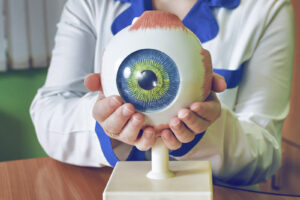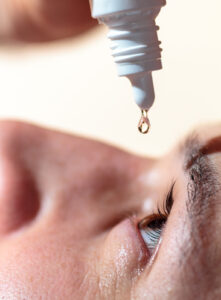
Glaucoma used to be a guaranteed path to blindness before the discovery of eye pressure lowering eye drops. (Learn more about glaucoma here.) These days, through early detection and treatment, most people with glaucoma keep functional vision their entire lives.
The most common treatment for glaucoma has been those eye drops and when one is inadequate for lowering eye pressure on it’s own, there are several others your doctor can add. We have 6 different classes of drugs that work together to lower eye pressure.
However, eye drops are not the only treatment for glaucoma. They have historically been the first line of defense, though more research is being done into treatments that work more consistently without a daily medication.
Why Not Use Drops?

Eyedrops have been a wonderful tool in preventing blindness caused by glaucoma and anyone would agree that it’s much better to use eyedrops than do nothing. Before the advent of eyedrops, if you had glaucoma, you were treated with a highly invasive surgery that left you permanently exposed to a risk of infection and they typically failed eventually.
However, eye drops do have some problems. The biggest problem when treating glaucoma is compliance with taking the eyedrops. It’s a difficult habit to form and we find that patients miss an average of 90 days (33%) of the year of their medication. Compare glaucoma care to tooth care – even if you took care of your teeth perfectly the month before your dental visit, if you skipped brushing and flossing for 90 days a year, your doctor would still find evidence of tooth decay. Unlike tooth care, though, we can’t give you a filling or crown – vision lost to glaucoma is permanently gone.
The other main problem with eye drops is they can be harsh to the surface of your eye, sometimes as a side effect, and sometimes as a way to absorb into your eye better. Studies estimate 40-60% of glaucoma patients have dry eye because of their eye pressure medications. They can sting and cause eye redness.
Selective Laser Trabeculoplasty
This treatment, often called an SLT because the full name is a mouthful, was developed over 20 years ago as a replacement to a similar treatment called Argon Laser Trabeculoplasty (ALT, which was introduced in 1979). It is well established and well studied with an excellent safety profile.
It can be repeated if needed, though only 6% of people need additional treatment within 1 year.
The reasons it works are not perfectly understood. Laser energy is applied to a part of your eye called the Trabecular Meshwork, which is a sponge-like filter. A fluid called Aqueous Humor is produced in the eye to nourish different structures and provide rigidity to the eye. That fluid then drains out through the filter and gets reabsorbed into the bloodstream.
It’s thought that the laser energy stimulates this meshwork to clean out debris and to drain out more fluid. The extra drainage lowers the pressure balance of the eye, which protects the eye from glaucoma.
The biggest risk of the treatment is short-term eye pressure rise which tends to resolve after a day.
The treatment itself is relatively quick, just a few minutes as your doctor treats the entirety of the meshwork. There are no restrictions after.
It’s about as effective as the best eye drops we have and well covered by insurance.
Time-Release Medication Implants
The FDA just approved another option to get away from eyedrops – a medication implant. This is a time-release pellet of the same medication you are likely getting from an eyedrop that has helped control eye pressure for years in some patients without the need for eye drops.
This medication is painlessly inserted into your eye in the clinic with minor restrictions after. It stays in the eye long term. Because it’s inside your eye, a much lower concentration is needed to treat you eye pressure. It also doesn’t cause the same issues with dry eye and redness.
The procedure is covered by most insurances, so we’ll ensure coverage prior to treatment.
Clinical Trials
There are many different clinical trials investigating various treatments for glaucoma, from less invasive implants to minimally invasive surgeries and new drug classes. Glaucoma research is one of the fastest growing fields in ophthalmology! The researchers are confident that we’ll one day be able to reverse damage caused by glaucoma, but in the meanwhile, we’ll have to settle for halting progression.
Ask your doctor about different options available, if you’re interested!